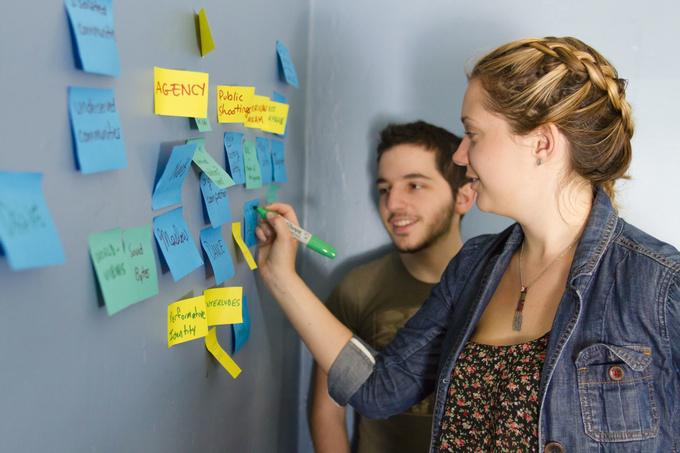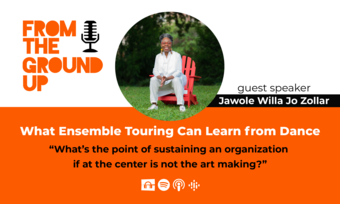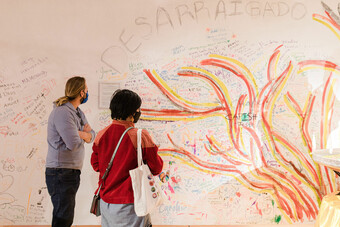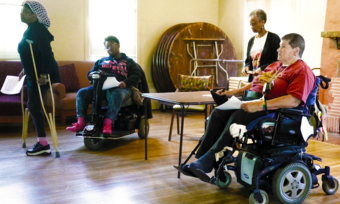How To Start Your Own Experimental Theatre Company
To understand what it is like to start your own theatre company at twenty years old, imagine a tsunami crashing on a tiny beach town on some remote island. The stakes are high, and no matter what you prepare for, the raw power of the forces battering in all directions leaves your once idealistic paradise in chaos. Kindness and patience are tested. Egos are bruised. Disorganization inevitably emerges and must be met with persistence and a constant willingness to approach problems from a new angle.
Our tsunami crashed on June 1st, when we moved into a three bedroom attic in Brooklyn. In a violent swirl of air mattresses, mini fridges, and legal pads, we set to work. The goal: to create, rehearse, and open a show in six weeks, to find a way to pay for it, and to bring it to as many people as we possibly could. Our cast of characters was a recipe for the perfect storm: Paul, the quiet philosopher and musician; Sasha, the bold director; Mida, the film prodigy; Jill, the bassoonist and author; Michael, the comedian and playwright; Charlie, the master technician; Vanessa, the dramaturg and idealist; and Jordan, the drive. It was unclear whether we were starting a theatre company, a punk band, or a book club.
What has emerged from the rubble? Lamplighter Productions. We struck upon the name as a means to describe the company early on, back when we thought the play we were working on wanted to be an adaptation of Antoine de Saint-Exupery’s The Little Prince. In the midst of his interplanetary travels, the little prince lands upon a character whose daily task is to light the single lamp on his small planet. “That is a beautiful occupation,” the prince muses. “And since it is beautiful, it is truly useful.” Even though our skills and processes are extremely different, we have united as a company over a shared desire to make collaborative, interdisciplinary art and foster positive change in our society.

Almost immediately, we discovered that radically diverse ideals and aesthetics could cause creative clashes. From day one there has been an ongoing debate on the purpose of theatre, on how much work we should leave for our audiences, on whether narrative is important in crafting an experience. Yet, somehow, there has also been a perfect storm of good intentions and unwavering patience. We have channeled our divergent perspectives into art that mirrors our dinner-table discussions, leading to work that represents many voices, and is therefore both inclusive and accessible.
Starting this company has meant putting ourselves through a crash-course in marketing, graphic design, commercial video production, and social media engagement.
The most fulfilling part of creating our first play has been incorporating our identities into the art. By setting our world-views and artistic sensibilities against one another, we have honed in on our shared interests. A vague conversation about everything gradually became a show about the nebulous concepts of agency and participation. A show about agency and participation was slowly chiseled into a play about what it means to be a good person, and whether it is possible to be truly yourself. The characters were based on our company members: Vanessa and Paul have emerged as alternate approaches to coping with the social pressures we feel oppressed by, as embodied by the GoodPerson™ corporation. How to Be a GoodPerson™ has become the title of our show and, what’s more, has informed our company culture. This “how to” attitude pervades all aspects of our communal living: how are we to do anything?

How to: market ourselves. Getting attention as a “non-hierarchical, transmedia arts production company” isn’t easy. Being in New York City is no help. Over the last few weeks we have distributed thousands of handbills and flyers with limited success. With all of the other noise that permeates this city, trying to be heard is akin to shouting into the wind. We faced this same challenge in online marketing. Starting this company has meant putting ourselves through a crash-course in marketing, graphic design, commercial video production, and social media engagement.
How to: pay the bills. Funding a theatre project is an uphill battle. Traditional funding sources are generally split into three streams: grant, earned, and contributed. For grants, we found very limited options. The majority are reserved for registered non-profits and well-established companies, which does not help a fledgling production group. In terms of earned income, we leveraged our skills by running after-school arts classes for high school students. Though we were met with enthusiasm by the schools and student groups we contacted, few actually registered. They all provided the same feedback: if you offer an after-school program, announce it several months beforehand and offer it for longer than a month. Our most successful source of money has been crowdfunding. While it may seem daunting, many of the few thousand theatre projects on Kickstarter are poorly designed. We found that by taking the time to make ourselves look good—by staging compelling photos and making a polished introductory video—we were able to distinguish ourselves from the pack and earn the distinction of “staff pick."

How to: be good people. Tensions become exacerbated when you’re living and creating in a small space with seven people who are remarkable, but nothing like you. Decisions are made and then repealed. Both bathrooms are occupied. The entire script has been changed overnight. Somebody forgot to do the dishes. There’s always an excuse to be frustrated.
Containing and channeling that frustration into something productive is the challenge that we have best accommodated to. We eat breakfast, lunch, and dinner together, and thank the chef of the day. We listen to each other. We are seldom in agreement.
And that’s good. Because in order to create something real, and something “radically inclusive,” one must respect conflict. The fact that our show doesn’t seek a singular voice, but rather reflects the marketplace of ideas in the real world and in our attic bolsters the notion that we are creating something honest and true to who we are. Surely, we have killed many of our darlings throughout this ordeal. But we have discovered a process of understanding that is in no means destructive. Rather, it is a dialectic. An invitation to synthesize. And it is beautiful and complex and provocative. We’ve learned to respect in ways we couldn’t have imagined before we threw ourselves into this tidal wave, and each of us is a better person for it. And in talks of radical hospitality and inclusivity, respect, in all iterations of the word, makes all of the difference.









Comments
The article is just the start of the conversation—we want to know what you think about this subject, too! HowlRound is a space for knowledge-sharing, and we welcome spirited, thoughtful, and on-topic dialogue. Find our full comments policy here